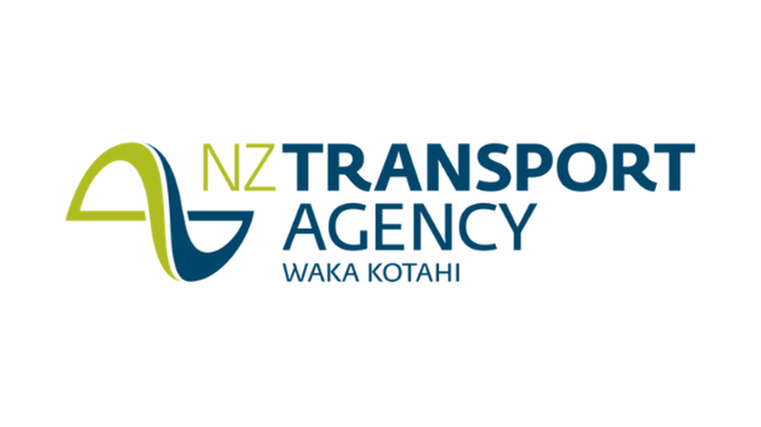In-depth: Failure of NZTA

The government says work is “well under way” to address shortcomings uncovered during a review of the NZTA’s operations by consultancy firm MartinJenkins. Among its action is the recruitment of up to 100 staff for its regulatory services group over the next 18 months along with measures likely to cost upwards of $45 million.
It’s all based on a report by consultancy MartinJenkins, which has produced a document that’s a damning indictment of what many experts in the automotive industry have feared for years – and that’s the NZTA has failed to do its job as a regulator and enforcer, as reported in the November 2019 issue of Autofile magazine.
Following on from that report, this online article looks into the report in more detail.
Reregulation not seen since ‘wild west’
As reports into performance go, they don’t get much worse than the review of the NZTA’s regulatory capability produced for the Ministry of Transport (MoT). One expert in the automotive industry told Autofile he feels the lack of agency enforcement over the years borders on deregulation on a scale not seen, perhaps, “since the wild west”.
The report’s executive summary kicks off with regulatory failure and its causes since the agency was created in 2008, but notes “active steps are now being taken”. There have been issues at different points of the regulatory cycle and system. These have included the lack of clear regulatory strategy and comprehensive regulatory scope, issues in implementing regulatory decision-making, problems with applying sanctions in a timely way and a focus on providing a service when the agency’s primary role is to regulate.
“From around 2012 until mid-2018, there has been a powerful focus on customer service without clarity as to what that means when delivering regulatory functions,” the report states. Its sections include:
*Weak regulatory experience, capability and culture among senior leaders from inception to the present day.
“Individuals with deep regulatory experience have been either at lower levels or few in number at senior levels. There are some staff and managers below senior levels with strong regulatory expertise and knowledge. There has been a lack of visibility of regulatory issues and risks board and executive leadership team [ELT] level.”
*Challenges with regulatory accountability and decision-making.
“A consolidated instrument of board delegation, updated in March 2010, sets out functions and powers reserved to the board with the assumption other functions and powers will be delegated to the chief executive. We note the board hasn’t reserved any powers and functions to itself, which relate to powers and functions in legislation within the responsibility of the access and use group. This could be taken as an indication regulatory matters and decision-making have a low priority, or lower than other functions, for the board.”
*Regulatory capability and supporting resources.
“The analytics and insights needed to support regulatory strategy and decision-making are underdeveloped at the NZTA due to systems and capability challenges. Recent uncovering of failures of compliance and enforcement has meant a short-term focus on addressing these failures through an increase in compliance and enforcement activity. This has successfully cleared a backlog of cases and strengthened processes around enforcement decisions.”
As for regulatory failure, it is defined as the point when an intended outcome isn’t seen to be achieved. A recent example dates back to January 2018 when William Ball lost his life in an accident. The vehicle he was in had a frayed seatbelt that snapped and there was corrosion on both front A-pillars. But the vehicle had been given a warrant of fitness (WOF) in December 2017 by Dargaville Diesel Specialists (DDS). Among other things, the inspection failed to check the seatbelt webbing properly.
This case was reviewed by Kristy McDonald QC, who found the NZTA had known about DDS’ non-compliance with expected WOF practices over some years, but hadn’t taken enforcement action to address this. DDS and its inspectors were permitted to continue issuing WOFs for considerably longer than was reasonably safe, the report states.
It adds there have been systemic deficiencies in the agency’s regulatory capability and function, which have led to instances of regulatory failure. “Our conclusions align with Kirsty McDonald that the DDS situation wasn’t isolated, but an example of wider systemic issues in the regulatory function of NZTA.”
The MartinJenkins report continues: “There have been regulatory deficiencies occurring over time, which in turn have contributed to regulatory failure. There was deficiency at the point of entry and renewal into the regulatory system when the NZTA treated the issuing to parties of licences to operate as those parties paying for a service, rather than qualifying for a privilege to operate. There was regulatory deficiency with… non-compliant behaviours over extended periods.
“Perhaps the most significant aspect has been the failure to provide oversight and leadership over the regulatory system, and the role and functions of the NZTA. It hasn’t had an overarching strategy or regulatory practice framework for leading, planning and operating as an effective road-transport regulator across the entire system.
“More work is required to ensure recent developments are fit for purpose to fully support the role of the NZTA as a regulator, and guide its interactions with others in the sector, such as NZ Police, local authority road-controlling authorities, key service delivery partners [KSDPs – the AA, VINZ and VTNZ] and others with delegated responsibility for regulatory work, such as WOF and COF certifiers.”
The investigation has highlighted causes for regulatory failure. These relate to: (1) A lack of effective oversight of the regulatory function dating when the NZTA was set up; 2) The agency focusing on customer service at a key point in its evolution, which overshadowed focus on regulatory; (3) The inability to develop a single end-to-end regulatory strategy until too late; (4) The lack of good-practice guidance for frontline staff in making effective regulatory decisions; (5) A weak mandate from senior management to support frontline decision-making; (6) The degeneration of regulatory capability in road transport.
The structure of the NZTA
The MartinJenkins report describes the agency’s structure as being an ongoing challenge for achieving and supporting a consistent regulatory approach. From inception, it has had three separate functions – infrastructure, investment and regulation.
“Infrastructure and investment were dominant,” states the report. “Regulatory was recognised as a challenge for a common, consistent approach to regulation. There has been under-investment in regulatory capability and resourcing needed to do the job well.”
The access and use (A&U) group embarked on a transformation programme in late 2010 with a vision for the following three years to transform its business by reducing compliance costs, improving customer service and modernising business tools – in particular, IT infrastructure.
The programme acknowledged A&U had inherited a financial situation whereby the cost of delivering its regulatory and compliance services was more than revenue received. In 2011, there was a deficit of some $6m. Over the next four years or so, the NZTA reversed this to surpluses. This enabled more investment in regulatory initiatives. “However, the focus seemed more in the area of efficiency gains to improve customer experience, such as improved driver licensing, than building regulatory effectiveness.”
The report explains the land-transport funding system is set up so user fees and charges – driver and operator licensing, WOF/COF fees and toll collection – pay for regulatory activities for licensing, audit, inspection and enforcement, administration of driver licensing and transport-service licensing registers, and tolling operations.
MartinJenkins says it spoke to many passionate staff who believed in the importance of the agency’s mission and were determined to do their best to contribute to road safety. However, “it was surprising to find that, despite the widespread belief the NZTA had inappropriately softened its approach to enforcement, we have only seen a few examples of documented evidence of staff or others raising concerns with senior management or the board”.
The report states some employees talked about being “beaten up with customer-service messages” or suggested staff who continued to use enforcement approaches would be restructured. “In this context, what’s clear is that staff focused on doing what they could in the existing structure and prevailing culture of customer service. This may be, in part, a contributor to challenges the agency faced with inconsistency of delivery across its regions.”
Outside organisations working with agency
Overall, the NZTA isn’t seen as a strong system leader for land transport, according to MartinJenkins. Although most people outside of it were complementary about key individuals they dealt with, they emphasised positive relationships were based solely around those individuals – not the agency as a whole.
“Several people have said frequent restructuring has made it challenging to know who to contact,” the report states. “Some have told us the quality of engagement has varied over time. We heard from industry representatives that they wanted a strong regulator willing to deal firmly with operators able to undercut competitors through being non-compliant.
“People outside of the NZTA told us the customer approach taken was inappropriate for a highly competitive road-transport industry. The industry was concerned it wasn’t performing as a regulator and operators choosing to comply are unfairly bearing costs being avoided by non-compliant operators.
“Third-party agencies are frustrated at a lack of consistency in how different operators are treated. An example given was that small WOF garages are infrequently audited, while larger providers were subject to regular and repeated visits. We were also told third-party agencies needed more certainty in their agreements with the NZTA. They explained the practice of rolling over contracts for a year at a time makes business planning more difficult.
“Several people we spoke to recognised the agency’s priorities are not well-aligned with those of the commercial businesses that complete regulatory tasks on the NZTA’s behalf. There is a consistent message from stakeholders that over the past two to three years it has neglected many key relationships, which have been dependent on specific individuals. This was evident with many interviewees indicating they still ring the previous NZTA person with queries or for support. In some cases, this was simply because they didn’t know who the replacement was or found it too difficult to find out.
“Many people interviewed hadn’t considered escalating concerns directly with the NZTA’s board if they failed to make progress within the organisation. This was a concern as it reduces the board’s ability to provide leadership or direction in this area, and possibly meant issues festered away. External providers noted they have found it challenging to get a consistent NZTA view.”
Parties acting for the NZTA
Organisations acting as regulator on behalf of the agency have delegated functions and powers as if they were the NZTA. “In this regard, they need to see themselves as making decisions on permitting access to the land-transport system for people and vehicles,” says MartinJenkins. “The fact they receive a fee for doing this shouldn’t diminish their role as regulator.
“The challenge they face is to act as a regulator, but through delivering this function in a respectful, fair and efficient manner. It is an ongoing challenge in a regulatory model where functions are delegated to third parties who pay a fee.
“In interviews, many commented WOF and COF providers probably do not see themselves in the role of a regulator acting on behalf of the NZTA’s board. They see themselves as providing a service to their paying customers. For some, this probably means they see the commercial imperative as more important. Recent issues with non-compliance being addressed by the NZTA would seem to confirm this.
“Parties acting as regulator on behalf of the NZTA need to be provided with support and guidance so they understand their role in the system and can discharge responsibilities effectively. The NZTA also needs to engage effectively as regulator for monitoring and auditing these third parties.
“We heard strong feedback from large parties that they’ve had insufficient engagement with the NZTA, particularly over the past two to three years. We were told the agency needs to focus on getting the main agents back on-board and engaging directly with them – and as a group.
“We also heard the NZTA hasn’t created certainty around contract tenure via rolled over contracts, which leads to a lack of investment in systems by those parties acting on its behalf.
“We found not all parties discharging a regulatory role are acting in this role by design. In some cases, it’s clear an organisation is operating as a regulator, such as KiwiRail, AA, VTNZ and VINZ. However, sometimes these organisations are filling a void in the system that has been neglected or inadequately resourced. The Low Volume Vehicle Technical Association is an example of an organisation filling a void.
Issues with access and use group
“Dissent was not tolerated,” according to MartinJenkins’ report. “Staff reported that if you challenged the plan, you got restructured out. People spoke about the learnt behaviour of people keeping their heads down and not wanting to rock the boat too much for fear of losing their positions. A small number who did speak out were reprimanded publicly.”
As an example, the report uses the structure of the access and use (A&U) group in 2009 as an example. It comprised of three groups that focused on their specific areas, which delivered these activities:
*Operational policy across three themes: road-user behaviour, vehicles, and commercial operations – road and rail. This group translated high-level government strategies and policies into workable policies and guidelines for staff in regional operations and the transport registry centre, and for industry and the public.
*Regional operations: commercial operators, vehicles and road users. This group carried out compliance interventions, such as enforcement, deterrence, reviewing and auditing, advising, informing and educating.
*The transport regulatory centre covered customer enquiries, motor-vehicle registrations and renewals, RUC licences, revenue collection from fees and charges, driver licensing, national registers of motor-vehicle registrations and driver licenses, tolling, and taxi licensing A&U’s “transformation’ for 2010-13 was about enhancing business efficiency, improving customer service, and modernising IT infrastructure. Another aim was to reduce the compliance burden on New Zealanders seeking to access and use the land-transport system.
“This programme resulted in some structural changes,” states the report. “The aim was for the structural design of A&U to support the intent of the programme to ‘maximise our contribution towards the objectives and priorities of government and operate in the ways outlined by the NeXUS and Safer Journeys strategies’. The final design consisted of a group manager of A&U with three national manager reports [direction, design and delivery) and four regional manager reports.
“[However], from the creation of NZTA through to about 2016, there has been inadequate regulatory understanding and capability at senior leadership level. This lack of capability was also an issue at third-tier management level with managers coming from non-regulatory backgrounds.
“We believe this lack of experience was aggravated by a naïve emphasis on ‘making it easy to comply’, without adequate consideration of how non-compliance will be identified and resolved. In our opinion, insufficient effort was directed at identifying those likely to be non-compliant and providing staff with adequate support to respond efficiently to non-compliance.
“We heard from staff frustrated by what they saw as an inappropriate focus on customers. Operational staff felt enforcement was frowned on. We heard staff speak about taking a ‘semi-stealth’ approach to bringing a prosecution or ensuring that before they escalated a matter for a decision, they had gathered ‘too much evidence for it to be ignored’.
Lack of integrity with NZTA data
Interviewees during MartinJenkins’ investigation commented on the lack of data integrity in the NZTA’s systems. Comments included if an address is updated in the motor-vehicle register this doesn’t update other related registers that record information about the vehicle. Another was that WOF stickers aren’t tracked, while it is possible to fraudulently register a vehicle for farm use then change the class at the post office to a passenger vehicle.
“Interviewees also commented the motor-vehicle and driver-licence registers do not communicate with one another,” states the report. “For example, the system will not alert anyone if someone has lost their licence, but is requesting an inspection for a vehicle they technically cannot drive.
“In our interviews with internal staff, people told us the NZTA isn’t using modern tools and technology to get to the nub of the issue, ‘the industry is so far ahead of us technologically’, and there were simple and smart technology solutions that could contribute to capability building.”
Looking back at previous probe
Finally, the MartinJenkins report makes further reference to the inquiry into the performance of the NZTA in relation to Dargaville Diesel Specialists and the death of William Ball by Kristy McDonald QC.
This inquiry was commissioned in 2018 following his passing on February 1, 2018. Ball was involved in an accident and, due to a fraying seatbelt, he hit his head on the windscreen. The vehicle had recently passed a WOF check.
The inquiry found the NZTA appeared to have regarded inspecting organisations (IOs) and vehicle inspectors (VIs) primarily as its clients and only secondarily as regulated entities, and despite having broad regulatory powers, the NZTA’s approach to compliance was to inform, educator and deter. This had resulted in not taking regulatory action when necessary.
Other findings included processes for compliance staff to monitor the performance of IOs and VIs were inadequate, the NZTA’s culture did not prioritise rigorous regulatory action and didn’t support staff to take robust enforcement when it was “patently needed”, and the 2014 reforms and customer focus exacerbated fundamental problems within the agency’s regulatory function.
The recommendations were: (1) The NZTA should return to its core regulatory purpose to undertake its functions in a way that contributes to an effective, efficient and safe land-transport system, and in the public interest work towards a culture that facilitates and encourages rigorous regulatory oversight; (2) Refocus regulatory strategy on public safety, ensuring the customer-focus model does not compromise robust enforcement when appropriate; (3) Ensure the NZTA’s processes and systems follow its overarching regulatory strategy; (4) Enable the agency to operate as an agile, responsive and reasonable regulator; (5) Ensure compliance staff are appropriately supported in a way that enables them to recommend robust regulatory action when appropriate, and follow that recommendation through to a decision.
FIND OUT MORE WITH AUTOFILE
You can read more about the MartinJenkins report in the November 2019 issue of Autofile.
Don’t miss out on future issues of the magazine – click here to subscribe.
Autofile – in print, online and through social media – strives to provide the automotive industry with in-depth and intelligent journalism on the news that really matters.





